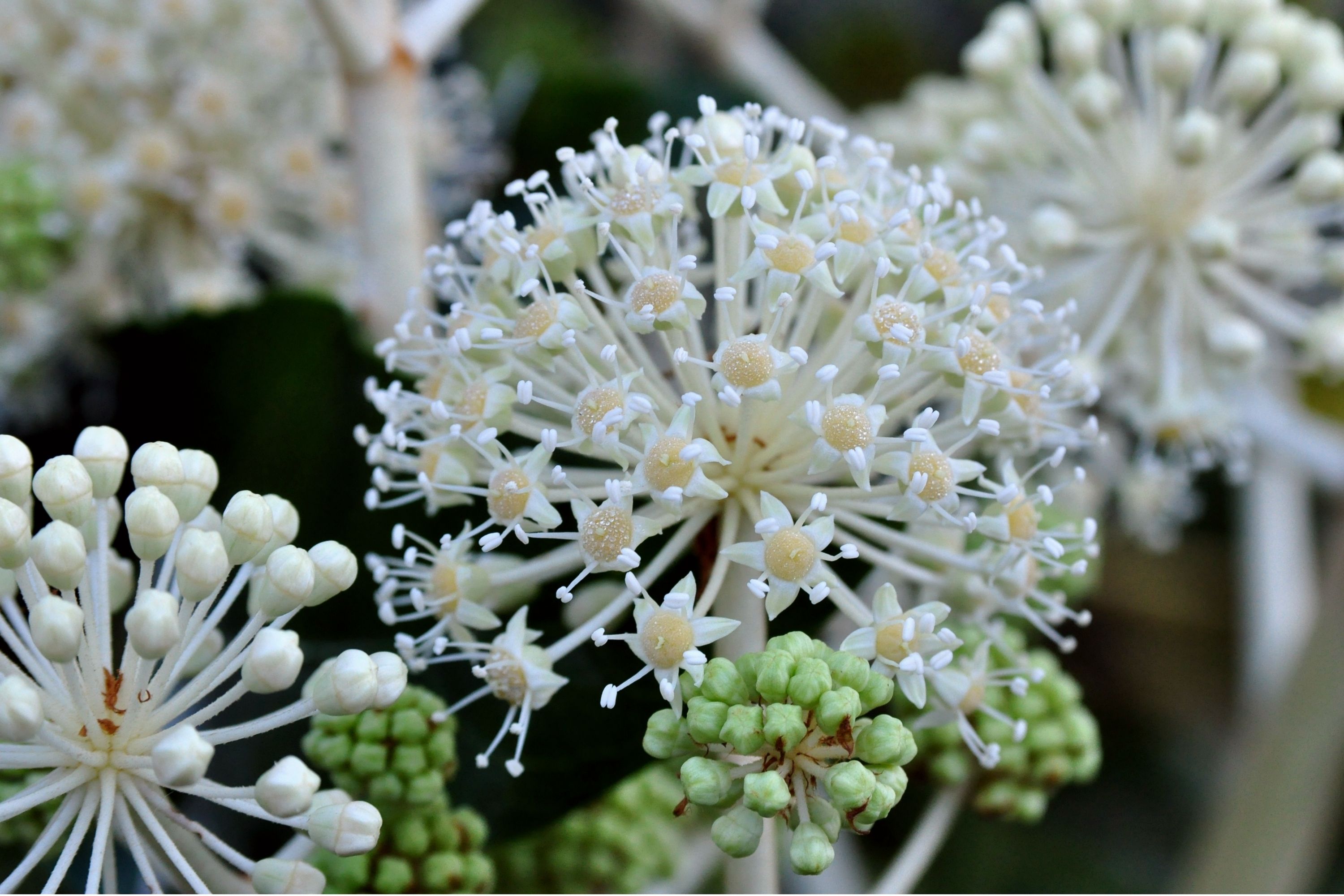Paperplant
(Fatsia japonica)

Description
Fatsia japonica, also known as Japanese aralia or glossy-leaved paper plant, is a species of flowering plant that belongs to the family Araliaceae. This evergreen shrub is native to Japan and South Korea, but it has been widely cultivated as an ornamental plant in gardens and landscapes throughout the world. In this article, we will explore the characteristics, cultivation, and uses of Fatsia japonica. Taxonomy and Etymology The scientific name of Fatsia japonica comes from two sources. Fatsia is a Latinized version of the Japanese name for the plant, "fatsi," while japonica refers to its origin in Japan. The common name "Japanese aralia" refers to the genus Aralia, to which Fatsia japonica was formerly assigned. However, in 2012, a molecular phylogenetic study indicated that Fatsia should be considered a separate genus. Characteristics Fatsia japonica is a large, evergreen shrub that can grow up to 3 meters in height and spread up to 2 meters wide. The plant has a thick, fleshy stem and large, glossy, palmate leaves that can measure up to 30 centimeters across. The leaves are dark green and shiny, with a slightly serrated edge, and they are arranged alternately on the stem. The plant produces small, white or cream-colored flowers in clusters in autumn, followed by small black or brown berries in winter. Cultivation Fatsia japonica is a hardy and easy-to-grow plant that thrives in a range of growing conditions. It prefers a partially shaded position with moist, well-draining soil, but it can also tolerate full sun and a range of soil types. The plant is tolerant of pollution, making it a good choice for urban gardens. Fatsia japonica is also resistant to pests and diseases, making it a low-maintenance plant. Propagation Fatsia japonica can be propagated by taking stem cuttings in spring or early summer. The cuttings should be around 10-15 centimeters long and should be taken from the current year's growth. Dip the cuttings in rooting hormone powder and place them in a pot filled with a well-draining compost mix. Keep the pot in a warm, shaded position and mist the cuttings regularly to maintain humidity. Once the cuttings have rooted, they can be potted on into individual pots and grown on until they are large enough to be planted out in the garden. Uses Fatsia japonica is a popular ornamental plant that is grown for its attractive foliage and architectural form. It can be used as a specimen plant, as part of a mixed border, or as a screening plant. The plant's large, glossy leaves make it an ideal plant for indoor use, as it adds a tropical look to any room. In Japan, the plant has been traditionally used in herbal medicine to treat a range of ailments, including respiratory disorders, digestive problems, and skin conditions. In Conclusion Fatsia japonica is a versatile and attractive plant that can bring a touch of the exotic to any garden or indoor space. With its hardy nature and low-maintenance requirements, it is a popular choice for both novice and experienced gardeners. Whether used as a specimen plant or as part of a mixed border, Fatsia japonica is sure to impress with its glossy leaves and striking form.
Taxonomic tree:







